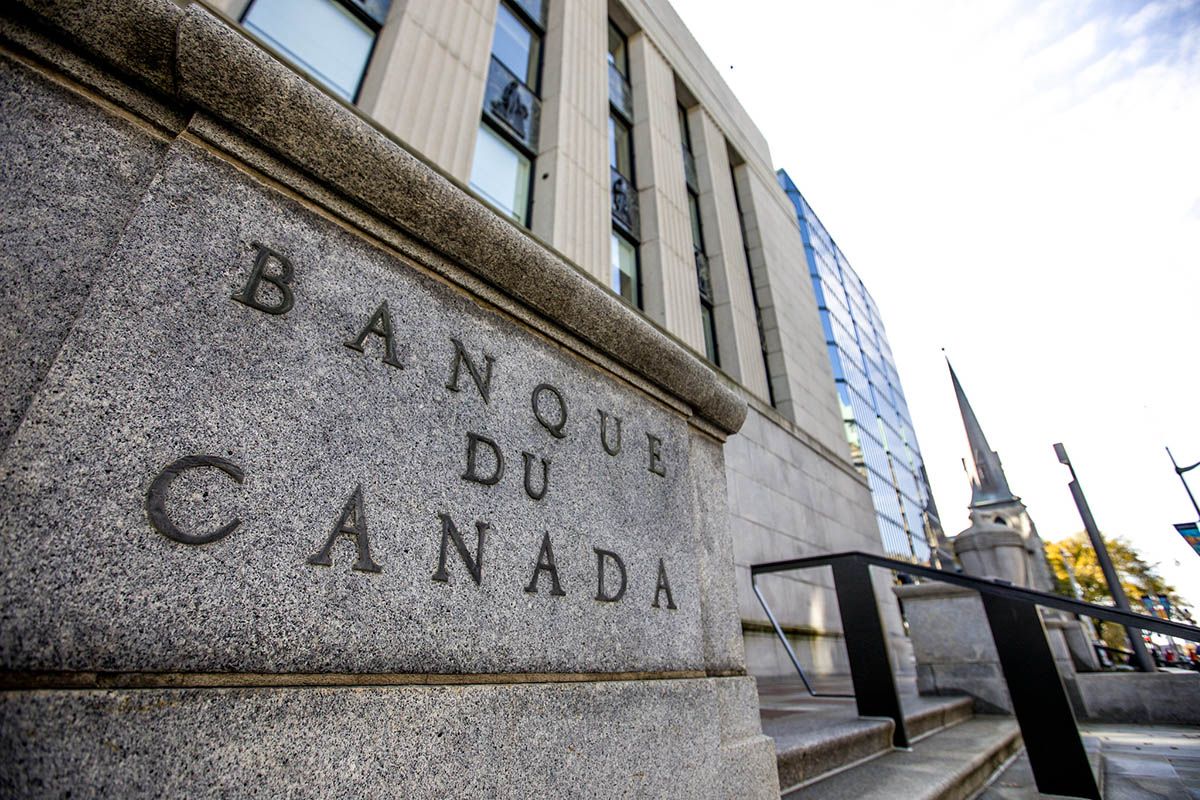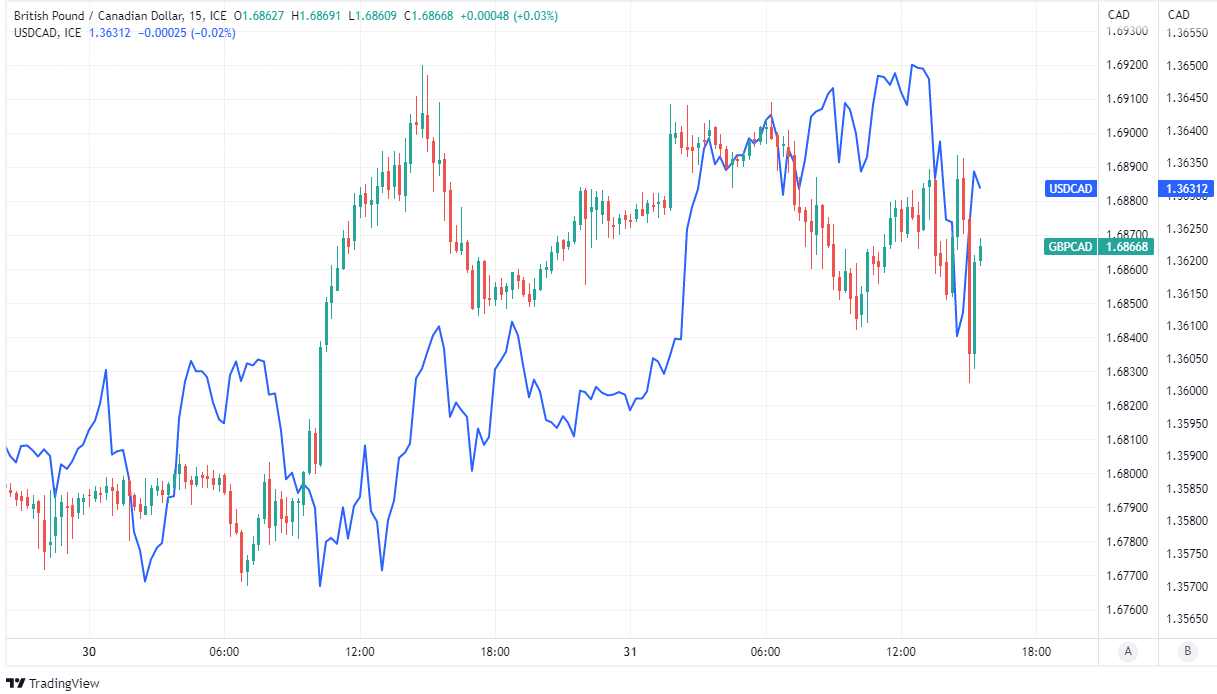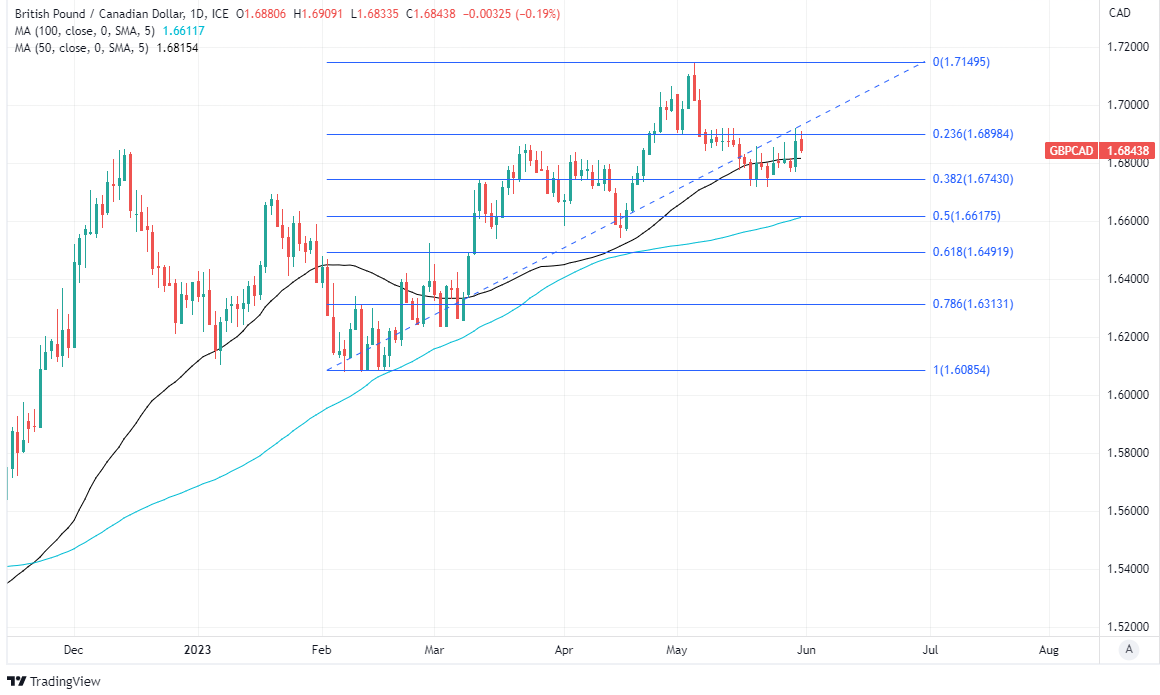Canadian Dollar Leans on Sterling after Data Casts Economy in Resilient Light
"For the Bank of Canada, this is the latest data point reinforcing the strength of the Canadian economy, particularly the consumer" Desjardins.

Image © Bank of Canada, Reproduced Under CC Licensing
The Canadian Dollar recovered lost ground from the Pound and others in midweek trade after Statistics Canada said the local economy ground to a halt at the end of the second quarter but likely rebounded in April, placing the Bank of Canada (BoC) under a spotlight.
Canada's economy was preliminarily estimated to have grown 0.2% in April on Wednesday after a March contraction of manufacturing activity and stagnation of output from the larger services sector combined to leave GDP unchanged at the end of the first quarter.
But avoiding a March contraction meant the economy grew 0.8% for the first quarter overall, a touch stronger than the April BoC forecast for an annualised expansion of 2.3% in the opening months of the year.
"Moreover, the +0.2% advance estimate for April was stronger than expected, particularly given the drag from a strike by federal workers. Overall, the headline reading, composition of growth and handoff to Q2 were all slightly stronger than we had expected, raising the odds of another Bank of Canada rate hike," says Andrew Grantham, an economist at CIBC Capital Markets.
"However, we still expect that they will want to wait to see more data and revise their forecasts (in the July MPR) before making a final decision on whether to raise rates again, rather than hike next week," he adds.
 Above: Pound to Canadian Dollar rate shown at 15-minute intervals alongside USD/CAD.
Above: Pound to Canadian Dollar rate shown at 15-minute intervals alongside USD/CAD.
Extractive industries concerned with mining, quarrying, oil and gas were the main breadwinners in all periods covered while wholesale and retail trades were the largest drag on activity within a services sector that formed the primary weight around the ankles of the economy.
"Real GDP rebounded strongly in the first quarter of 2023, coming in at 3.1% annualized following a slight negative print in Q4 2022. Domestic demand advanced by 2.6% annualized in Q1, after contracting in the prior quarter," says Randall Bartlett, a director of Canadian economics at Desjardins.
"For the Bank of Canada, this is the latest data point reinforcing the strength of the Canadian economy, particularly the consumer. While we’ll get more information at next week’s rate announcement, we think today’s data substantially increases the odds of another rate hike," Bartlett adds.
The data comes a week out from the next Bank of Canada interest rate decision and follow closely behind an April inflation report suggesting the disinflation process was interrupted by domestic price increases last month.
 Above: Pound to Canadian Dollar rate shown at daily intervals with Fibonacci retracements of 2023 recovery and selected moving averages indicating possible areas of technical support for Sterling. Click image for closer inspection.
Above: Pound to Canadian Dollar rate shown at daily intervals with Fibonacci retracements of 2023 recovery and selected moving averages indicating possible areas of technical support for Sterling. Click image for closer inspection.
"There are still early signs that cracks are forming in the economic backdrop - job vacancies are declining, consumer delinquency rates are edging higher and households are saving less," says Nathan Janzen, deputy chief economist at Royal Bank of Canada.
"But the economy's resilience will put pressure on the BoC to raise interest rates further. Governing Council will actively discuss a hike next week, but we think they'll wait until July to see if more evidence accumulates in favour of a rate increase," Janzen adds.
Wednesday's figures were followed by a sell-off in Canadian government bonds and speculation among economists about whether recent figures would lead the BoC to conclude that further increases in the cash rate might be necessary in order to ensure inflation returns to the 2% target.
The BoC left its cash rate unchanged at 4.5% in January, March and April in order to observe the extent to which last year's increase from 0.25% is working to restrain "excess demand" and return inflation to the desired level.
The consensus among economists suggests the cash rate is likely to remain unchanged at 4.5% but financial markets have recently priced in a high risk of the benchmark being raised to 4.75% before the end of the third quarter.
